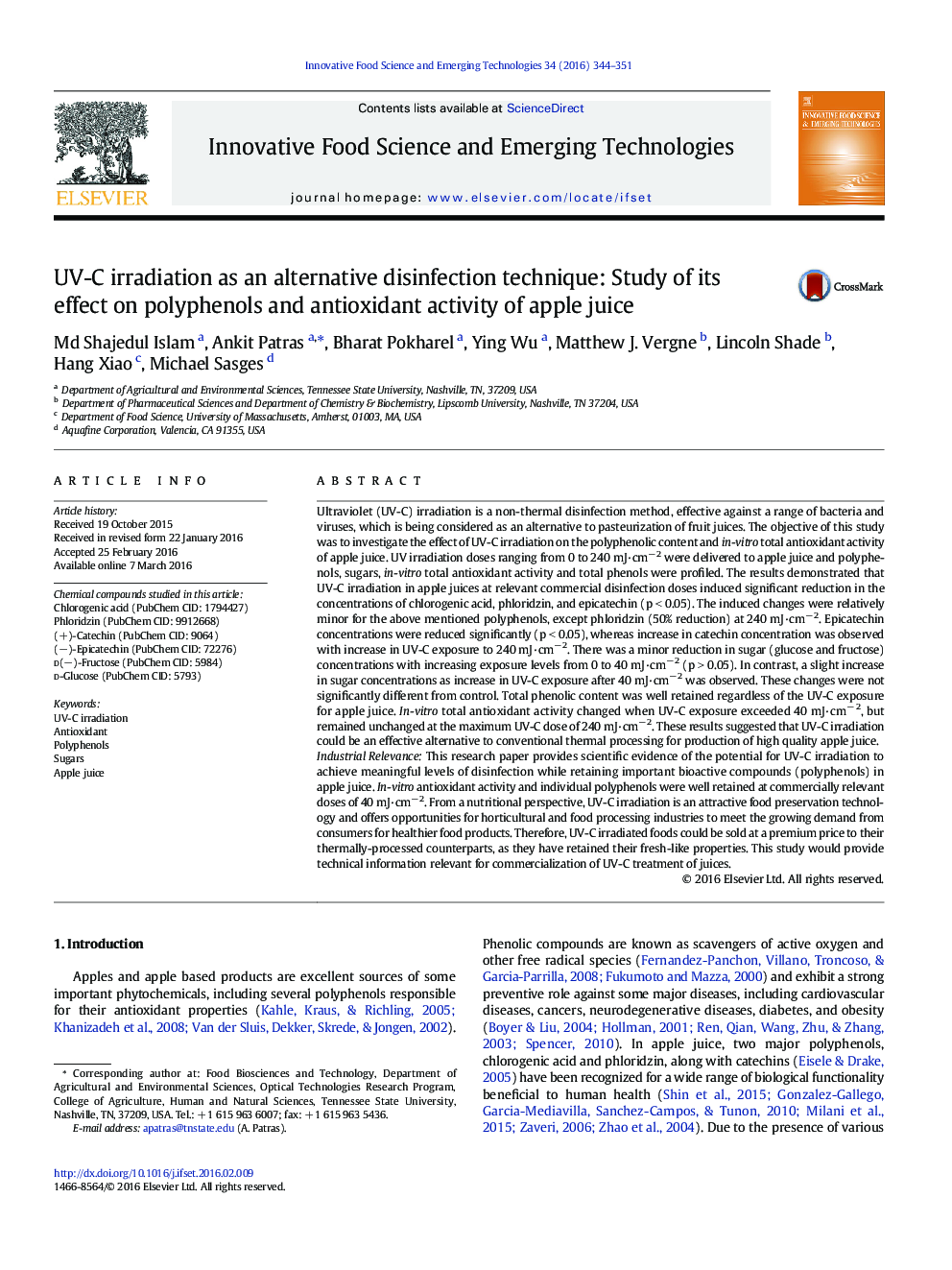| کد مقاله | کد نشریه | سال انتشار | مقاله انگلیسی | نسخه تمام متن |
|---|---|---|---|---|
| 2086386 | 1545532 | 2016 | 8 صفحه PDF | دانلود رایگان |
• Antioxidant activity and polyphenols of irradiated apple juice were assessed.
• UV doses were validated and verified using bio-dosimetry.
• Antioxidant activity and polyphenols at UV doses of 40 mJ·cm− 2 were well retained.
• UV-C technology could be effective for production of high quality apple juice.
Ultraviolet (UV-C) irradiation is a non-thermal disinfection method, effective against a range of bacteria and viruses, which is being considered as an alternative to pasteurization of fruit juices. The objective of this study was to investigate the effect of UV-C irradiation on the polyphenolic content and in-vitro total antioxidant activity of apple juice. UV irradiation doses ranging from 0 to 240 mJ·cm− 2 were delivered to apple juice and polyphenols, sugars, in-vitro total antioxidant activity and total phenols were profiled. The results demonstrated that UV-C irradiation in apple juices at relevant commercial disinfection doses induced significant reduction in the concentrations of chlorogenic acid, phloridzin, and epicatechin (p < 0.05). The induced changes were relatively minor for the above mentioned polyphenols, except phloridzin (50% reduction) at 240 mJ·cm− 2. Epicatechin concentrations were reduced significantly (p < 0.05), whereas increase in catechin concentration was observed with increase in UV-C exposure to 240 mJ·cm− 2. There was a minor reduction in sugar (glucose and fructose) concentrations with increasing exposure levels from 0 to 40 mJ·cm− 2 (p > 0.05). In contrast, a slight increase in sugar concentrations as increase in UV-C exposure after 40 mJ·cm− 2 was observed. These changes were not significantly different from control. Total phenolic content was well retained regardless of the UV-C exposure for apple juice. In-vitro total antioxidant activity changed when UV-C exposure exceeded 40 mJ·cm− 2, but remained unchanged at the maximum UV-C dose of 240 mJ·cm− 2. These results suggested that UV-C irradiation could be an effective alternative to conventional thermal processing for production of high quality apple juice.Industrial RelevanceThis research paper provides scientific evidence of the potential for UV-C irradiation to achieve meaningful levels of disinfection while retaining important bioactive compounds (polyphenols) in apple juice. In-vitro antioxidant activity and individual polyphenols were well retained at commercially relevant doses of 40 mJ·cm− 2. From a nutritional perspective, UV-C irradiation is an attractive food preservation technology and offers opportunities for horticultural and food processing industries to meet the growing demand from consumers for healthier food products. Therefore, UV-C irradiated foods could be sold at a premium price to their thermally-processed counterparts, as they have retained their fresh-like properties. This study would provide technical information relevant for commercialization of UV-C treatment of juices.
Journal: Innovative Food Science & Emerging Technologies - Volume 34, April 2016, Pages 344–351
